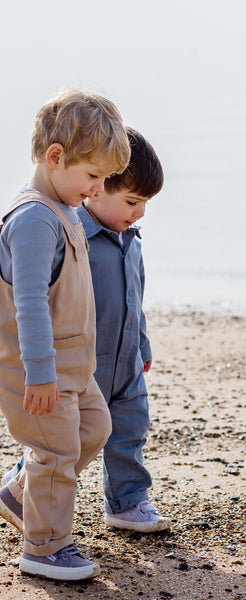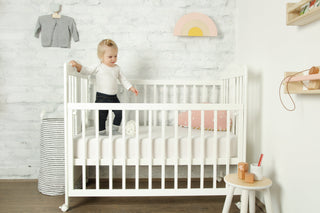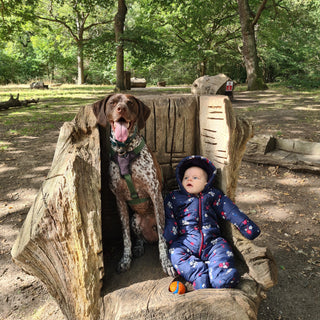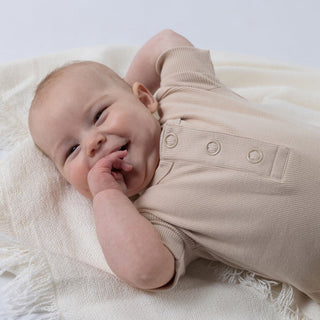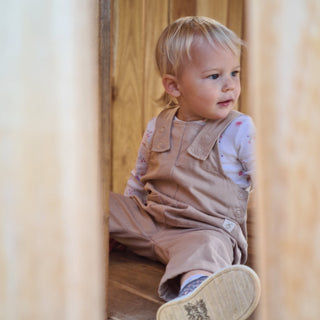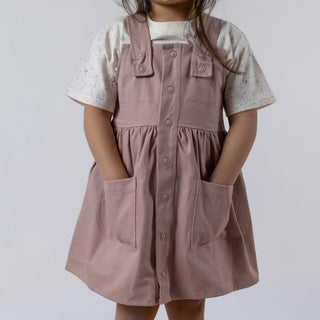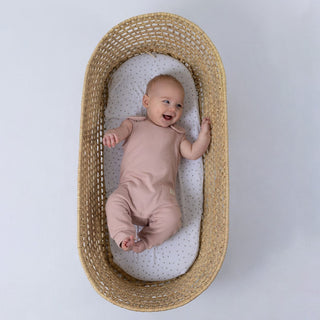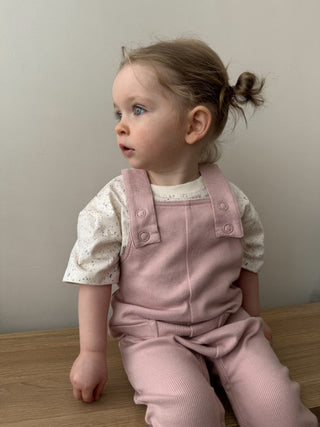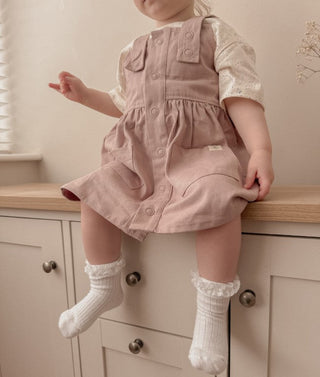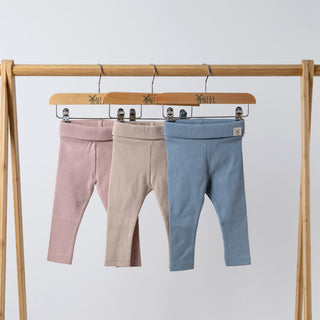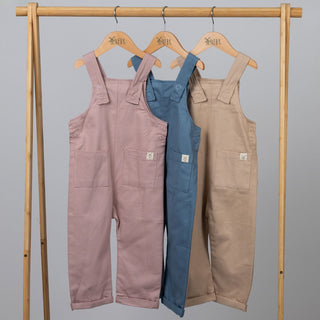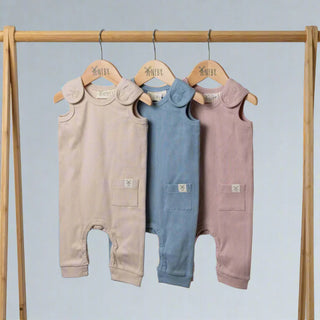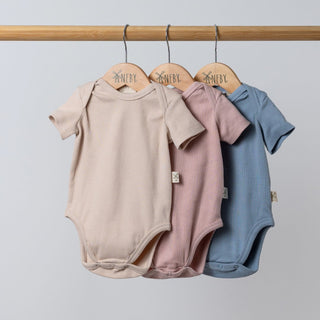When I was expecting my first baby, I imagined the nursery as this perfectly styled, magazine-worthy space. But as I started researching, I realised how many baby products are made from synthetic materials, wrapped in plastic, or destined for landfill within a year. That changed my approach entirely.
Creating an eco-friendly nursery is not about spending a fortune or compromising on safety. It is about making thoughtful choices that work for your home, your baby, and your budget. Over the years, we have set up two nurseries in different houses and learned what is truly worth buying, what you can source second-hand, and where eco swaps are harder to make.
Nursery Non-Negotiables
For both of my girls, I started with a second-hand Moses basket and bought a new mattress. The basket was in perfect condition, and replacing the mattress followed safe sleep guidelines. This combination gave me peace of mind and meant one large item avoided the skip.
I also made sure we had breathable, organic cotton bedding. Synthetic fabrics may be cheaper, but they are not as breathable and can release microplastics when washed. Choosing organic meant my babies were not sleeping directly against chemically treated fabrics.
Sourcing Second-Hand Furniture
Some of our best nursery finds have been pre-loved. The cot, chest of drawers, and a soft bedroom rug all came from local sellers. Buying second-hand not only saved money, but also meant we could choose better quality pieces than we could have afforded new.
If you are buying pre-loved furniture, always check for signs of wear that could affect safety, such as loose fittings on cots or drawers. A quick sand and repaint with low-VOC, child-safe paint can transform a piece.
Eco Swaps That Were Harder
Not everything in a nursery is easy to find sustainably. Paint was a real challenge. Eco-friendly paints are often more expensive and less readily available. We eventually found a low-VOC brand, but it required more searching and a higher budget than standard paint.
VOC stands for Volatile Organic Compounds. These are chemicals found in most standard paints - things like formaldehyde, benzene, and toluene - which release fumes into the air as the paint dries. That “new paint smell” is actually VOCs evaporating, and in a baby’s room, it’s something worth avoiding.
In the UK, brands like Lakeland Paints and Little Knights make nursery-safe, zero-VOC options that are odourless and eco-friendly. They cost a bit more, but the peace of mind was worth it for us.
Mattress protectors were another sticking point. Most are plastic-backed for waterproofing, which isn’t breathable or biodegradable. Organic cotton or wool alternatives do exist, but they’re harder to find and often cost significantly more. In the end, we chose a high-quality organic cotton protector with a thin waterproof layer; not perfect, but a compromise that balanced breathability, safety, and practicality for inevitable baby spills.
Minimalism as a Nursery Strategy
In our first home, space was limited. That turned out to be a blessing. We avoided buying bulky furniture like changing tables that are often used for only a short time. Instead, we used a simple foam changing mat that could be moved around the house.
Babies do not need as much as marketing suggests. My essentials list was short: a safe sleeping space, reusable nappies, vests and sleepsuits, a few blankets, bottles and steriliser if bottle feeding, and a baby carrier. Everything else was purchased as and when we actually needed it.
Pre-Loved Wins
Some of my favourite nursery items have been second-hand finds. Freya’s white noise machine and nightlight came from Vinted, as did blackout blinds for both girls’ rooms. They were in perfect condition and cost a fraction of the price of buying new.
These little wins add up. You are keeping good products in use, saving money, and avoiding unnecessary packaging. If you are happy to spend a bit of time searching, there is almost always a pre-loved option for what you need.
Budget and Eco Values Can Align
It is a misconception that eco-friendly automatically means expensive. If you follow the principles of reduce, reuse, and recycle, you will likely spend less than if you bought everything new.
We did not purchase most of our nursery items until the girls had arrived and we knew what was necessary. This avoided buying things that would never be used. It also meant we could keep an eye out for deals or second-hand finds instead of panic-buying before the due date.
DIY and Repurposing Ideas
We repurposed some of our existing furniture to work in the nursery. An old armchair became a nursing chair, and a spare chest of drawers was used for baby clothes. These choices saved money and avoided buying more items that would only be used for a short stage of life.
If you are handy, even small projects like making your own wall art from leftover fabric or creating storage baskets from cardboard and fabric scraps can add personality without adding waste.
One Small Change to Start With
If you are not sure where to start with making your nursery eco-friendly, focus on one area. For many parents, that is bedding. Choosing organic cotton bedding is a simple switch that has health, comfort, and environmental benefits. It also lasts long enough to be used for future children or resold. From there, you can move on to bigger changes like sourcing second-hand furniture or avoiding plastic where possible.
We recently launched a joint giveaway with Kayode who design and produce some gorgeous organic bedding options - check them out!
Final Thoughts
An eco-friendly nursery is not about perfection. It is about making practical choices that balance safety, sustainability, and budget. Sometimes that means buying new, but more often it means reusing what already exists, shopping second-hand, and focusing on quality over quantity.
Start with the essentials, make one change at a time, and do what works for your family. The goal is a nursery that feels safe and welcoming for your baby and that reflects the values you want to pass on as they grow.
For more ideas on building a sustainable home for your baby, see Reusable vs Disposable Nappies: An Eco-Conscious Guide and Everyday Eco-Friendly Baby Care.


